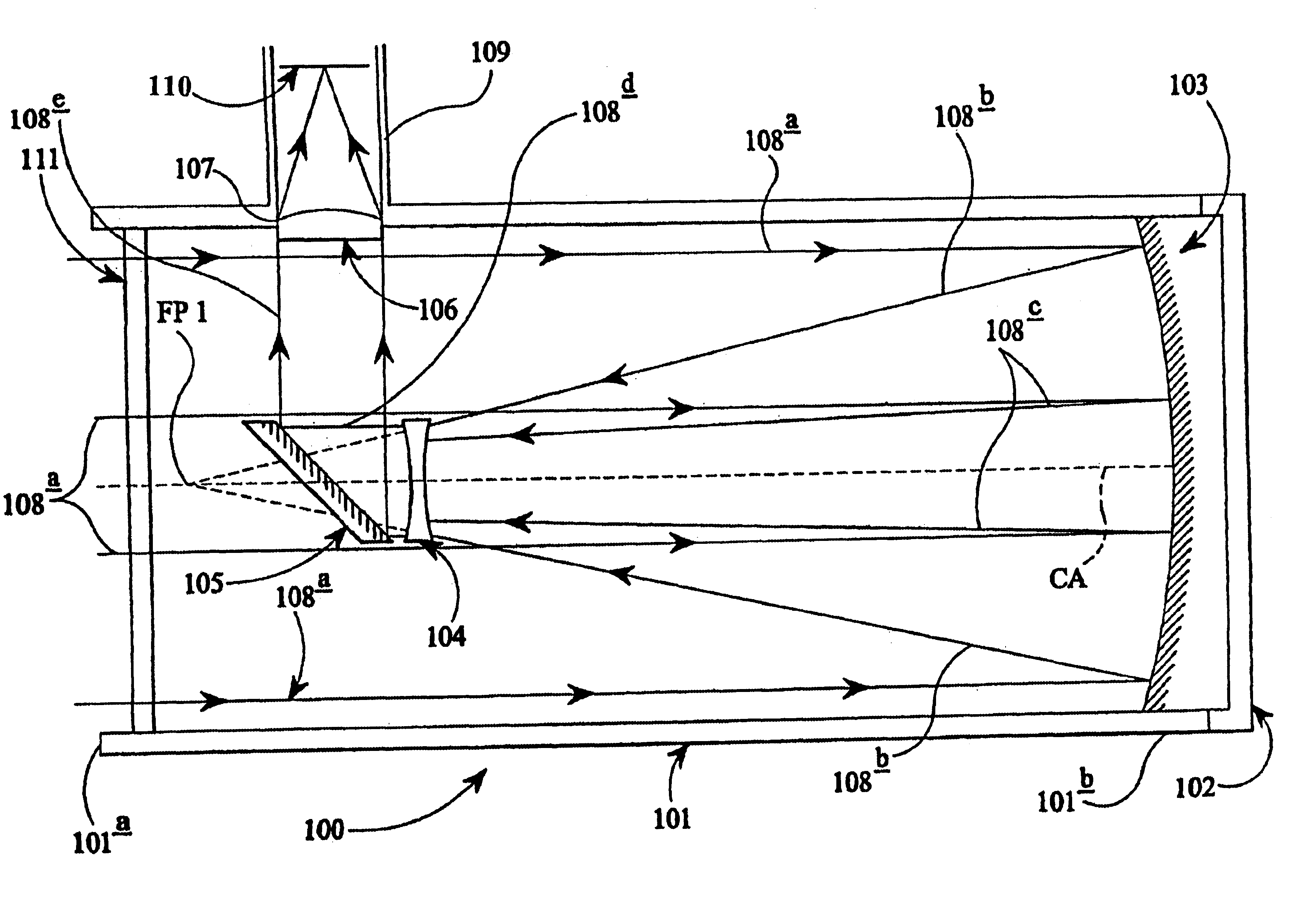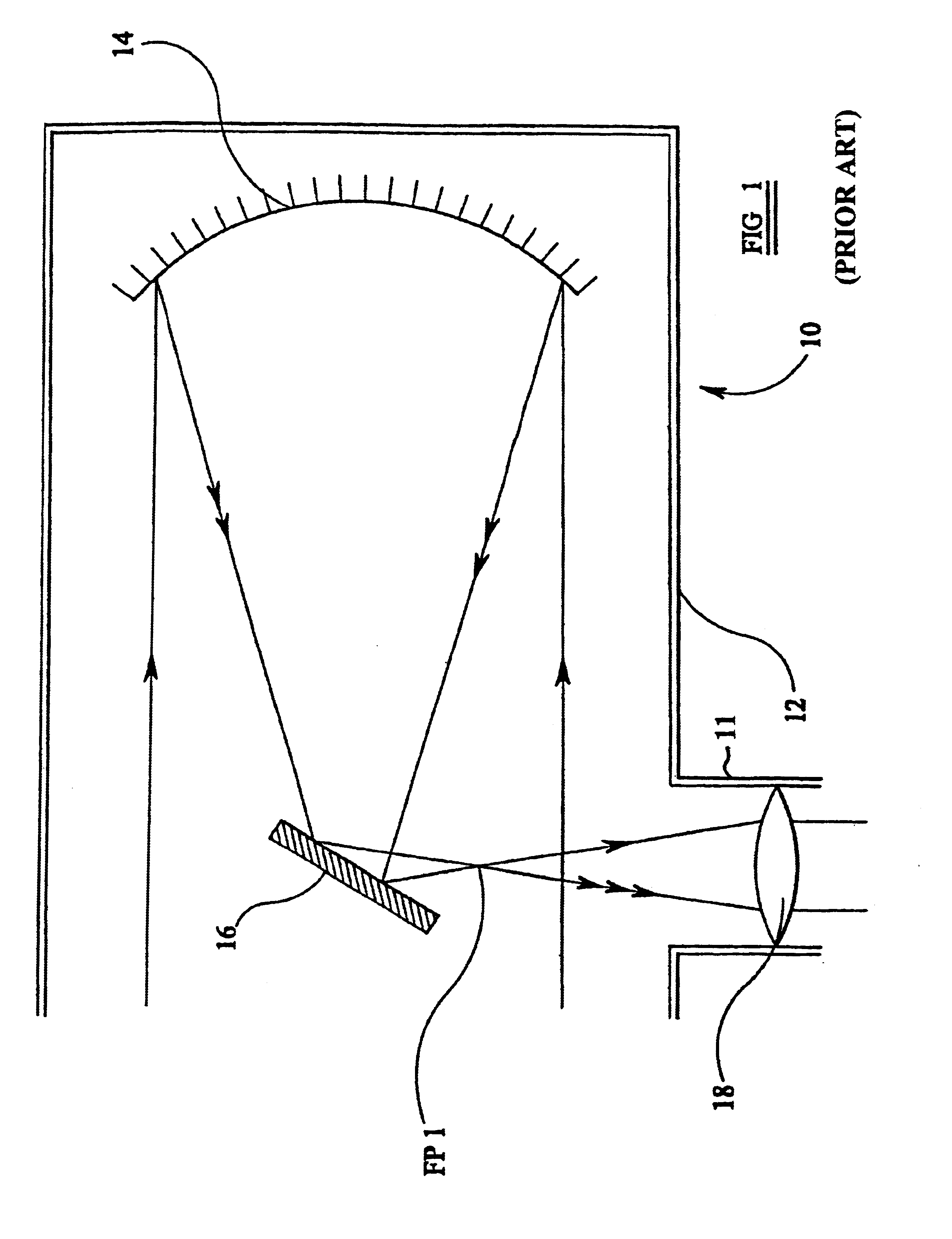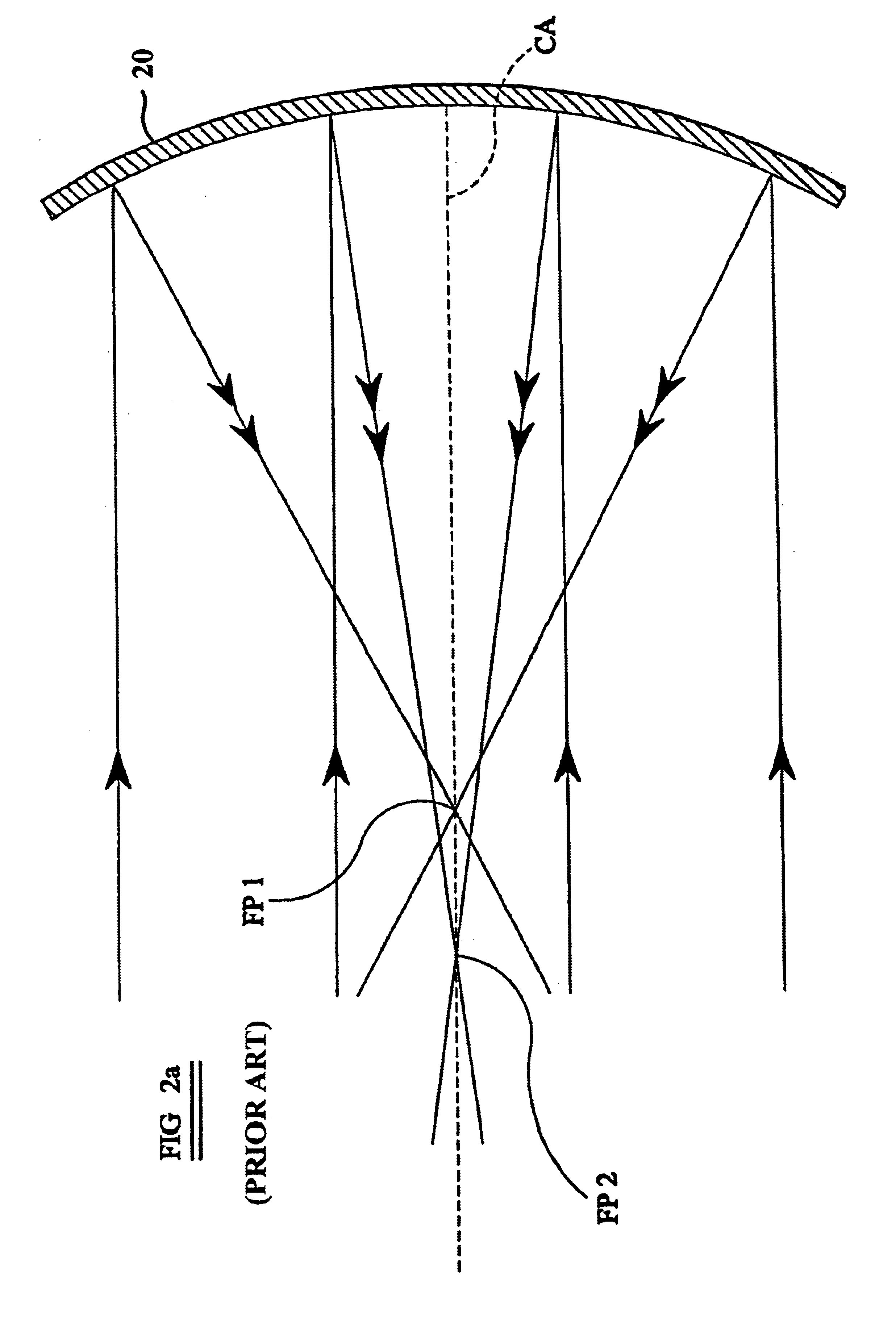Reflector telescope
a reflector telescope and telescope technology, applied in the field of reflector telescopes, can solve the problems of difficult and expensive manufacture of paraboloidal mirrors, telescopes unsuitable for photography, and use of paraboloidal mirrors in reflector telescopes, and achieve the effect of reducing or substantially eliminating spherical aberration and generally flat field of view
- Summary
- Abstract
- Description
- Claims
- Application Information
AI Technical Summary
Benefits of technology
Problems solved by technology
Method used
Image
Examples
Embodiment Construction
[0024]In FIG. 1, a simplified diagram of a conventional Newtonian reflecting telescope is shown generally at 10. The telescope consists of a generally elongate, cylindrical tube 12, open at one end thereof (or otherwise provided with an optical window) to allow the passage of light rays from a distant object into the telescope. A primary reflector in the form of a concave mirror 14, usually paraboloidal in shape, is mounted at the other end of the tube with its reflective surface directed towards the open end or optical window.
[0025]A secondary reflector in the form of a generally planar mirror 16 is mounted within the tube at a position between the open end of the tube and the primary reflector 14 with its reflective surface directed generally towards the primary reflector 14 but angled at 45° away from the central axis CA of the primary reflector 14. A lens 18 is mounted coaxially within a tube 11 arranged substantially at right-angles to the main tube 12 and serves as an ocular o...
PUM
 Login to View More
Login to View More Abstract
Description
Claims
Application Information
 Login to View More
Login to View More - R&D
- Intellectual Property
- Life Sciences
- Materials
- Tech Scout
- Unparalleled Data Quality
- Higher Quality Content
- 60% Fewer Hallucinations
Browse by: Latest US Patents, China's latest patents, Technical Efficacy Thesaurus, Application Domain, Technology Topic, Popular Technical Reports.
© 2025 PatSnap. All rights reserved.Legal|Privacy policy|Modern Slavery Act Transparency Statement|Sitemap|About US| Contact US: help@patsnap.com



